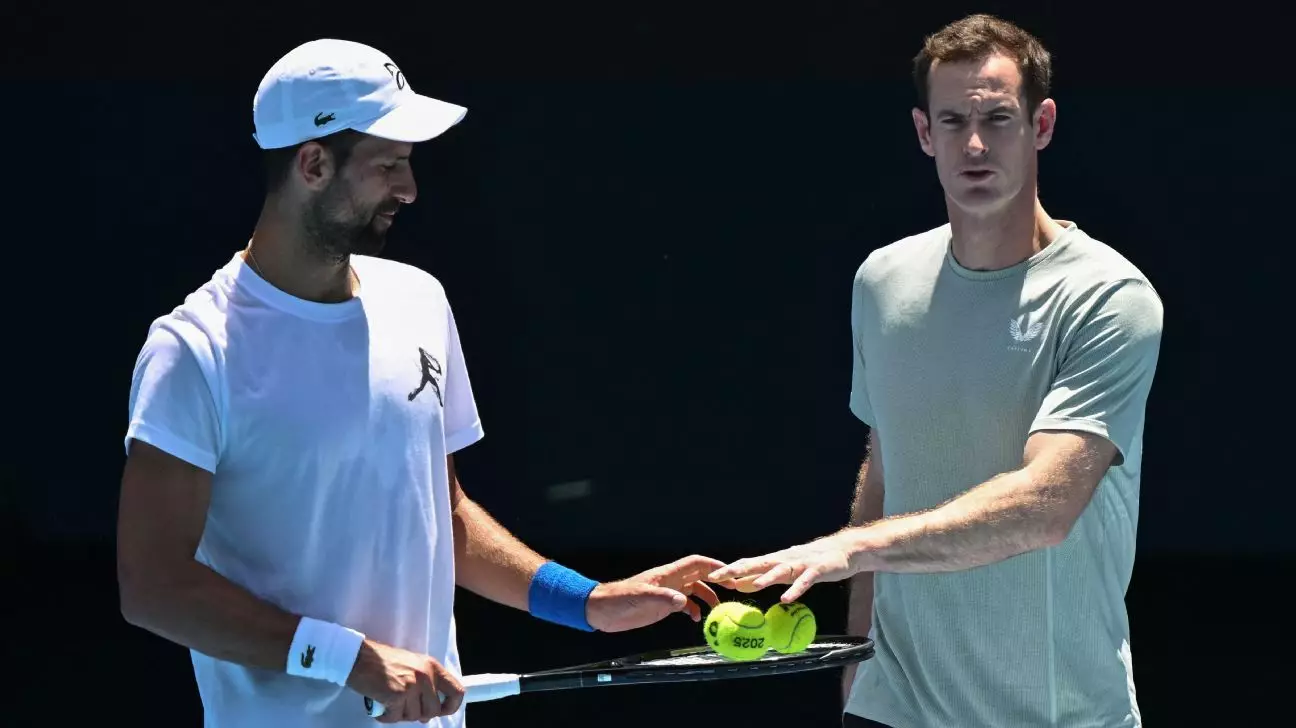The recent dissolution of the coaching partnership between Andy Murray and Novak Djokovic has sent shockwaves through the tennis community. After just six months, the two former rivals have opted to part ways, a decision stemming from Djokovic’s disappointing performance in recent tournaments. This unexpected turn of events raises questions about the dynamics of high-level coaching and how brief collaborations can influence the careers of elite athletes.
Promises and Performances
Djokovic’s journey with Murray began in November, heralding a potential revitalization of the Serb’s career as he aimed for an impressive eighth Wimbledon title. However, the reality proved to be a blend of fleeting success and missed opportunities. Djokovic reached the semifinals of the Australian Open but soon faced a series of lackluster results: a crucial final loss at the Miami Open, followed by early disappointments at prestigious Masters events in Monte Carlo and Madrid. This trajectory not only highlights the unpredictability of competitive sport but also begs the question: can any coach truly turn a player’s fortunes around in such a short span?
The Coach-Player Relationship
In a sport where mental fortitude is as crucial as physical prowess, the chemistry between a coach and athlete can significantly shape performance outcomes. Murray and Djokovic’s separation, underlined by respect and gratitude, suggests a mutual understanding of their respective needs. Djokovic outwardly expressed his appreciation for Murray’s efforts and the deepening of their friendship during this collaboration. Yet, the question looms: did they misalign in their coaching philosophy? The significance of a coach goes beyond mere tactical advice; emotional and psychological support is paramount. The inability to translate their camaraderie into competitive success may underscore a disconnect in expectations.
What Lies Ahead
As Djokovic looks ahead with the upcoming Geneva Open on his calendar, he faces the challenge of rediscovering his form without the guidance of the player whose career he once fiercely competed against. At 38, the physical demands of the sport continue to mount, raising the stakes significantly for his resurgence. With no clear reason given for his withdrawal from the ongoing Italian Open, speculation abounds regarding his readiness and mental state as he prepares for the clay season.
The pivotal question remains whether Djokovic can still harness the skills and determination that once placed him at the zenith of tennis. As he embarks on this new chapter of his career without Murray, one cannot help but ponder: Is it possible that the short-lived partnership has offered him more than just a coach’s guidance—perhaps a new perspective on his own game? In sports, growth often arises from adversity, and how Djokovic navigates this challenging period will be fundamental to his legacy. The tennis world will be watching closely to see if Djokovic can rebound and reclaim his former glory in the seasons to come.

